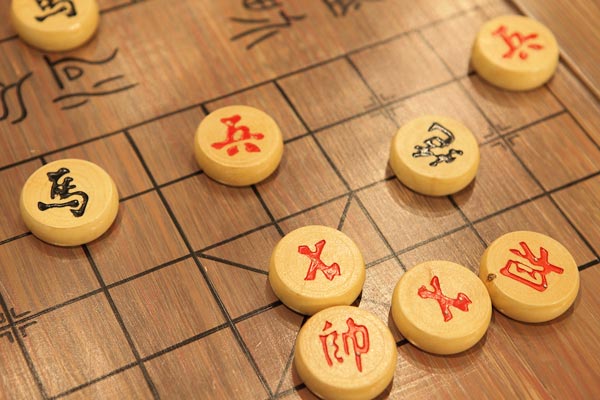"The 24 solar terms" is a knowledge system and social practice formed by the Chinese through observing the annual movement of the sun and recognizing the changing laws of seasons, climate, phenology, etc. in a year. It is an important part of the traditional Chinese calendar system and its related practical activities, and is known as "China's fifth invention".

Seasons alternation
The 24 solar terms is a time knowledge system formed by the Chinese through observing the annual movement of the sun. In the international meteorological community, it is known as "China's fifth invention". The 24 solar terms is based on the earth's orbit around the sun as one year, and the orbit of the earth's orbit around the sun is divided into 360°, the spring equinox is 0°, and every 15° thereafter is a solar term, for a total of 24 solar terms. There are 12 months in a year, and 2 solar terms in each month. The first half of the month is a festival, and the second half of the month is a period, which is referred to as a solar term. "Spring rains startle spring and clear the valley, summer is full of grain and summer heat. Autumn has dew and frost, winter snows and minor and major cold. The first half of the year falls on the 21st of the sixth lunar month, and the second half falls on the 23rd of the eighth lunar month. The dates of the two festivals are fixed every month, with a maximum difference of one or two days."
Festival time
Spring
- Lichun: The dipper points to the northeast, the handle of the dipper points to the tiger, and the sun's ecliptic longitude is 315 degrees. The festival falls on February 3-5 in the Gregorian calendar. Lichun is the beginning of the Yin month in the Ganzhi calendar.
- Rainwater: The dipper points to Ren, and the sun's ecliptic longitude is 330 degrees. It usually starts on February 18 or 19 in the Gregorian calendar and ends on March 4 or 5.
- Awakening of Insects: The dipper points to Ding, and the sun's ecliptic longitude is 345 degrees. The time point is March 5 or 6 in the Gregorian calendar. Awakening of Insects is the beginning of the Mao month in the Ganzhi calendar.
- Spring Equinox: The dipper points to Ren, and the sun's ecliptic longitude is 0 degrees. It falls on March 20-21 in the Gregorian calendar.
- Qingming: The Big Dipper points to Yi, the sun's ecliptic longitude is 15 degrees, and it is April 5 or 6 in the Gregorian calendar.
- Grain Rain: The Big Dipper points to Gui, the sun's ecliptic longitude is 30 degrees, and it is April 19-21 in the Gregorian calendar.
Summer
- Lixia: The Big Dipper points to the southeast, the sun's ecliptic longitude is 45 degrees, and it is May 5-7 in the Gregorian calendar, which is the end of the Chen month and the beginning of the Si month in the Ganzhi calendar.
- Xiaoman: The Big Dipper points to Jia, the sun's ecliptic longitude is 60 degrees, and it is May 20-22 in the Gregorian calendar.
- Grain in Ear: The Big Dipper points to Yi, the sun's ecliptic longitude is 75 degrees, and it is June 5-7 in the Gregorian calendar, which is the beginning of the Wu month in the Ganzhi calendar.
- Summer Solstice: The Big Dipper points to Yi, the sun's ecliptic longitude is 90 degrees, and it is June 21-22 in the Gregorian calendar.
- Lesser Heat: The Big Dipper points to Xin, the sun's ecliptic longitude is 105 degrees, and the solar term is from July 6 to 8 in the Gregorian calendar. Lesser Heat is the beginning of the Wei month in the Chinese zodiac calendar.
- Greater Heat: The Big Dipper points to Bing, the sun's ecliptic longitude is 120 degrees, and the solar term is from July 22 to 24 in the Gregorian calendar.

Autumn
- Beginning of Autumn: The Big Dipper points to the southwest, the sun's ecliptic longitude is 135 degrees, and the solar term is from August 7 to 9 in the Gregorian calendar. Beginning of Autumn is the beginning of the Shen month in the Chinese zodiac calendar.
- End of Heat: The Big Dipper points to Wu, the sun's ecliptic longitude is 150 degrees, and the solar term is from August 22 to 24 in the Gregorian calendar.
- White Dew: The Big Dipper points to Gui, the sun's ecliptic longitude is 165 degrees, and the solar term is from September 7 to 9 in the Gregorian calendar. White Dew is the beginning of the You month in the Chinese zodiac calendar.
- Autumnal Equinox: The Big Dipper points to Yi, the sun's ecliptic longitude is 180 degrees, and the solar term is from September 22 to 24 in the Gregorian calendar. Cold Dew: The dipper points to the finger, the sun's ecliptic longitude is 195 degrees, and the solar term is October 8-9 in the Gregorian calendar. Cold Dew is the beginning of the Xu month in the Chinese zodiac calendar.
- Frost Descent: The dipper points to the Xu; the sun's ecliptic longitude is 210 degrees, and the solar term is October 23-24 in the Gregorian calendar.
Winter
- Beginning of Winter: The dipper points to the Qian, the sun's ecliptic longitude reaches 225 degrees, and the solar term is November 7-8 in the Gregorian calendar. Beginning of Winter is the beginning of the Hai month in the Chinese zodiac calendar.
- Light Snow: The dipper points to the Ji; the sun's ecliptic longitude is 240 degrees, and the solar term is November 22-23 in the Gregorian calendar.
- Heavy Snow: The dipper points to the Gui; the sun's ecliptic longitude is 255 degrees, and the solar term is December 6-8 in the Gregorian calendar. Heavy Snow is the beginning of the Zi month in the Chinese zodiac calendar.
- Winter Solstice: The dipper points to the Zi; the sun's ecliptic longitude is 270 degrees, and the solar term is December 21-23 in the Gregorian calendar.
- Minor Cold: The Big Dipper points to Gui; the sun's ecliptic longitude is 285°. It occurs on January 5-7 of the Gregorian calendar. Minor Cold is the beginning of the Chou month in the Ganzhi calendar.
- Major Cold: The Big Dipper points to Chou; the sun's ecliptic longitude is 300°, and it occurs on January 20-21 of the Gregorian calendar.
Climate types
The 24 solar terms can be divided into four categories, representing the change from cold to hot: the beginning of spring, the spring equinox; the beginning of summer, the summer solstice; the beginning of autumn, the autumnal equinox; the beginning of winter, the winter solstice. The five solar terms that symbolize temperature changes are the Minor Heat, the Great Heat, the End of Heat, the Minor Cold, and the Great Cold. The seven solar terms that reflect precipitation are the Rain Water, Grain Rain, White Dew, Cold Dew, Frost Descent, Minor Snow, and Heavy Snow. The four solar terms that reflect phenological phenomena or agricultural activities are the Waking of Insects, Tomb-Sweeping Days, Grain-filling Grains, and Grain in Ear.
Historical Value
The 24 solar terms are a rich intangible cultural heritage, including related proverbs, ballads, legends, traditional production tools, living utensils, handicrafts, calligraphy and painting, as well as festival culture, production rituals and folk customs closely related to festivals. With the acceleration of China's urbanization process and the development of modern agricultural technology, the guiding function of "The 24 solar terms" for farming has gradually weakened, but it still has many cultural significance and social functions in the living world of contemporary Chinese people. It clearly reflects the Chinese people's concept of respecting nature, following the laws of nature and adapting to sustainable development, and highlights the uniqueness of Chinese people's cognition of the universe and nature and the richness of their practical activities, as well as the wisdom and creativity of living in harmony with nature. It is also a vivid witness to the diversity of human culture.
Social Impact
It has become a consensus among all sectors of society to carry forward excellent traditional culture. In many places, a series of activities are still held on the occasion of the arrival of solar terms such as the Beginning of Spring, Qingming, Beginning of Autumn, Autumnal Equinox, Frost Descent, and Winter Solstice. In 2006, the 24 solar terms were included in the first batch of representative items of national intangible cultural heritage. In 2011 and 2014, Jiuhua Lichun Festival, Banchun Persuading Farmers, Shiqian Shuochun, Sanmen Sacrifice for Winter, etc. were included in the extended list of the heritage items, and have been well inherited and promoted.
China's 24 solar terms have not only been passed down for a long time and spread widely in China, but also influenced many countries such as Japan, North Korea, South Korea, Vietnam, Malaysia, etc., leaving a deep cultural imprint of solar terms in the production and life of people in East Asia and Southeast Asia. As early as 552 AD, the 24 solar terms were introduced to Japan along with the Chinese calendar; in the Three Kingdoms period of Korea, Baekje had already used the Chinese "Yuanjia Calendar" containing the 24 solar terms; Vietnam introduced China's "Shushi Calendar" in 1324. These countries retained most of the solar terms on the basis of the Chinese calendar, adjusted the time or name of some solar terms, and created calendars suitable for local characteristics. Some of them also added festival customs with their own characteristics, such as Japan's miscellaneous festivals. The 24 solar terms system, after being localized, has influenced agriculture, calendar, festivals, social interaction, language, literature and art, as well as food, clothing, housing and transportation in East and Southeast Asian countries in a rich and diverse form, and is still vibrant today.




